
UNICOIL identified that significant amounts of lead were present in some of the paint used for pre-painted galvanized steel products and zinc used for galvanized steel products available in the markets of Saudi Arabia and GCC (Gulf Cooperation Council) countries. Studies have shown that lead exposure is estimated to account for 0.6% of the global burden of disease, with this burden being highest in developing regions. Childhood lead exposure is estimated to contribute to about 600,000 new cases of intellectual disabilities in children annually. Reductions over the last two decades in the use of lead in petrol, paint, plumbing, and solder have resulted in substantial reductions in blood lead levels. However, significant sources of exposure still remain, particularly in developing countries. There is extensive literature available in the public domain about lead. This section of the library provides a summary of the relevant literature covering basic facts, effects of lead poisoning, effects on the performance of galvanized and pre-painted steel, testing for lead, and the relevant regulations in various countries.
- 1Basic Facts of Lead as an ElementLead is a soft, very malleable and ductile element. It has a bluish-white coloring and a very bright luster. It is strongly resistant to corrosion and is sometimes alloyed with antimony as a hardener. Lead is a highly poisonous metal when inhaled or swallowed and long-term exposure can be harmful. Lead in its elemental form occurs very rarely in nature. It is most commonly found as galena (PbS) and extracted through a roasting process. It’s also found in anglesite, cerussite and minim.
Related Studies

Facts About Lead
LiveScience
www.livescience.com Lead is a soft, very malleable and ductile element. It has a bluish-white coloring and a very bright luster. It is strongly resistant to corrosion and is sometimes alloyed with antimony to harden … read more

Effects of Lead on Human Health
UNICOIL
www.unicoil.com.sa Lead is a useful and common metal that has been used by humans for thousands of years. It is also a very dangerous poison, particularly for children, when it is accidentally inhaled or ingested. The main target for the lead toxicity is the nervous system … read more - 2Lead Mines in the WorldGalena, or lead sulfide, the world’s major source of lead ore, occurs worldwide; and, it is mined in many countries, including the United States, Australia and China. Lead ore comes from underground mining operations, where the lead ore seams are blasted out of the ground and transported to the surface for refinement. Lead is commonly found in deposits with other minerals, such as silver, zinc or copper.
Related Studies
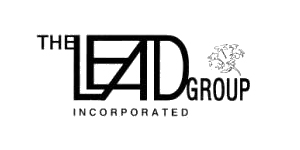
Lead Companies
The Lead Group Incorporated
www.lead.org.au The following links are provided for community watchdog information purposes only, and to assist lead mining companies in carrying out their lead product stewardship responsibilities … read more

Zinc-Lead Mining Companies Listed in All Countries
MiningFeeds
www.miningfeeds.com Below are the list of Zinc-Lead Mining Companies all countries around the world… read more

Major countries in lead mine production worldwide from 2010 to 2014 (in 1,000 metric tons)
Statista
www.statista.com This statistic provides a country-by-country breakdown of lead mine production from 2010 to 2014. In 2013, Sweden’s mines produced approximately 62,000 metric tons of lead. Thus, Sweden was among the top 10 lead mine producers worldwide… read more
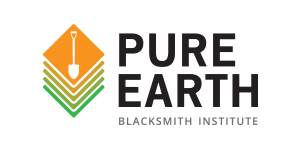
Lead Smelting
WorstPolluted
www.worstpolluted.org Lead processing and smelting plants work with both primary and secondary lead. Primary lead is mined, separated from ore, and refined into various products, whereas secondary lead is recovered from used objects – such as used lead-acid batteries – for reuse in other products… read more - 3Processing of LeadPrimary lead production begins with sintering. Concentrated lead ore is fed into a sintering machine with iron, silica, limestone fluxes, coke, soda ash, pyrite, zinc, caustics or pollution control particulates. The mixture is blasted with hot air to burn off the sulfur and sent to the smelter. Lead is usually smelted in a blast furnace using the carbon from the sintering machine to provide the heat source. As melting occurs, several layers form in the furnace. The molten lead layer sinks to the bottom of the furnace. A layer of the lightest elements, including arsenic and antimony, floats to the top and is referred to as the “speiss.” A “matte” layer also forms from the copper and metal sulfides. Finally, a layer of blast furnace slag, which contains mostly silicates, also forms. The speiss and the matte are usually sold to copper smelters where they are refined for copper processing. The slag is stored and partially recycled, if the metal content is sufficient.
Related Studies

6 Lead Processing
Illinois Sustainable Technology Center
www.wmrc.uiuc.edu The US is the third largest producer of primary lead, with most coming from Missouri. The primary end users of lead are batteries and ammunition. Consumers of lead include TV glass, computer glass, construction (including radiation shields), and protective coatings… read more - 4Applications of LeadThe main application of lead and of its oxide (PbO) is producing electrical batteries for vehicles, Rolled Extrusions, Pigments, Cable Sheathing, Ammunition & in Lead alloys. Lead alloys are largely used in industry.
Related Studies
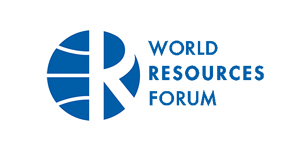
Applications and Use
World Resources Forum
www.wrforum.org Lead is a very soft, highly malleable, low-melting and ductile base metal that is very resistant to corrosion but tarnishes upon exposure to air Lead Uses, International Lead Association. The primary application of lead is in batteries; currently, the battery industry consumes approximately 71% of the world’s lead …. read more

Used of Lead
Gravita Engineering & Technologies
www.gravitatechnomech.com There are many different uses of Lead. It may be used as a pure metal, alloyed with other metals, or as chemical compounds… read more - 5History of Lead PoisoningLead poisoning is an environmental disease, but also a disease of life style. Lead is one of the most studied toxic substances, and as a result we know more about the adverse health effects of lead than virtually any other chemical. The health problems caused by lead have been well documented over a wide range of exposures on every continent. Advancements in technology have made it possible to research lead exposure down to very low levels approaching the limits of detection. We clearly know how it gets into the body and the harm it causes once ingested, and most importantly, how to prevent it! Using advanced technology, we can trace the distribution of lead throughout the environment and discover the health damage resulting from its exposure.
Related Studies

History of Lead Poisoning in the World
The LEAD Group Incorporated
www.lead.org.au Lead poisoning is an environmental disease, but it is also a disease of life style. Lead is one of the best-studied toxic substances, and as a result we know more about the adverse health effects of lead than virtually any other chemical. The health problems caused by lead have been well documented over a wide range of exposures on every continent…. read more

Lead Poisoning in a Historical Perspective
Environmental Research Foundation
www.rachel.org Lead has been mined and used by mankind for 6,000 years, and the history of lead poisoning is nearly 2,500 years old. Summarizing such a long story in a few pages in a balanced way is impossible….. read more
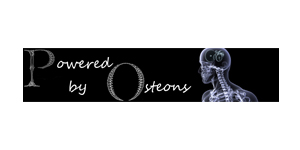
Lead Poisoning in Rome – The Skeletal Evidence
Powered by Osteons
www.poweredbyosteons.org A friend alerted me to an IO9 post, “The First Artificial Sweetener Poisoned Lots of Romans.” It’s a (very) brief look at some of the uses of lead (Pb) in the Roman world, including the hoary hypothesis that rampant lead poisoning led to the downfall of Rome – you know, along with gonorrhea, Christianity, slavery, and the kitchen sink… read more
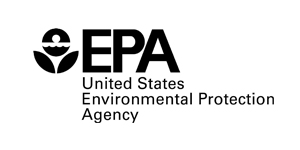
Lead Poisoning: A Historical Perspective
United States Environmental Protection Agency
www2.epa.gov The decades-old controversy over the use of lead as a fuel additive is a mere footnote to centuries of controversy over this remarkably useful but also insidiously deadly metal… read more - 6Effects of Lead PoisoningLead is one of deadliest metals that over a period of time can accumulate in the body and cause many health problems. Exercising and perspiration can detoxify the body from accumulation of heavy metals like lead. Keep in mind that lead cannot be excreted though the digestive system. The organs in the body absorb lead directly from the blood and store lead along with other minerals in the bones. From bones lead might be reentered to the blood stream because of renal failure, pregnancy or menopause.
Related Studies

Lead Poisoning
Seattle Organic Restaurants
www.seattleorganicrestaurants.com Lead is one of deadliest metals that over a period of time can accumulate in the body and cause many health problems. Exercising and perspiration can detoxify the body from accumulation of heavy metals like lead… read more
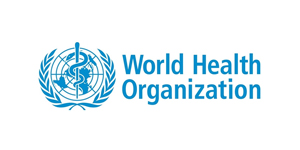
Childhood Lead Poisoning
World Health Organization
www.who.int Lead poisoning has been a scourge to human health for millennia.Childhood lead poisoning has been a recognized clinical entity since the first decade of the 20th century. Lead has had devastating consequences for the health of the world’s children…. read more

Lead
World Health Organization
www.who.int Lead is a toxic metal whose widespread use has caused extensive environmental contamination and health problems in many parts of the world. It is a cumulative toxicant that affects multiple body systems, including the neurologic, hematologic, gastrointestinal, cardiovascular, and renal systems. Children are particularly vulnerable to the neurotoxic effects of lead, and even relatively low levels of exposure can cause serious and in some cases irreversible neurological damage. read more
Time to Ban Lead in Industrial Paints and Coatings
National Center for Biotechnology Information, U.S. National Library of Medicine
www.ncbi.nlm.nih.gov In the U.S. and most high-income countries, regulations already restrict the use of lead paint for residential applications. However, few countries have enacted comprehensive bans on the use of lead additives in all paints… read more - 7International Organizations Involved in Dealing with Lead PoisoningSome of the major International Organizations involved in dealing with Lead poisoning are:



Related Studies

Lead
World Health Organization
www.who.int Lead is a toxic metal whose widespread use has caused extensive environmental contamination and health problems in many parts of the world. It is a cumulative toxicant that affects multiple body systems, including the neurologic, hematologic, gastrointestinal, cardiovascular, and renal systems… read more

ISEE Call for Action for Global Control of Lead Exposure to Eliminate Lead Poisoning
International Society for Environmental Epidemiology
www.iseepi.org Lead is a toxic metal whose widespread use has caused extensive environmental contamination and health problems in many parts of the world. It is a cumulative toxicant that affects multiple body systems, including the neurologic, hematologic, gastrointestinal, cardiovascular, and renal systems… read more

Lead Outreach, Partnerships and Grants
United States Environmental Protection Agency
www2.epa.gov In 2010, EPA launched an extensive outreach campaign to inform the tens of thousands of contractors, workers and families about the RRP rule. Outreach materials were sent to contractors, media, large and small hardware stores, trade associations, and others, and included ads, web materials, articles, postcards, brochures, and fact sheets… read more - 8Legislation’s on Lead in Various CountriesAn analysis of the specific legislations of countries, including the United States, Australia and India demonstrates the different ways governments have regulated lead in paint. The research also illuminates the regulation in the United States via the Lead Based Poisoning and Prevention Act (“Title X”) as the world’s best practice.
Related Studies

Lead Legislation: The World’s Best and Worst Practice Regulating Lead in Paint
The LEAD Group Incorporated
www.lead.org.au Since its discovery in 6500 BC, lead has been used for various purposes, most notably as an additive in paint. Since 200 BC, there has been an acknowledgement of its detrimental health impacts, including diminished mental health, physical defects, behavior problems, as well as infant death…. read more
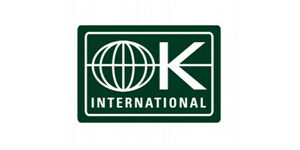
Lead Paint Background
Occupational Knowledge International
www.okinternational.org While developed countries have implemented standards to regulate the use of lead in paint, much of the new paint currently sold in most countries contains high levels of lead. OK International published one of the first studies along with our Indian partners at Toxics Link in 2008 on lead levels in paints in India that triggered the largest companies there to reformulate their residential paint products…. read more

Lead Outreach, Partnerships and Grants
Authenticated U.S. Goverment Information
www.gpo.gov In this part 1303, the Consumer Product Safety Commission declares that paint and similar surface-coating materials for consumer use that contain lead or lead compounds and in which the lead content (calculated as lead metal) is in excess of 0.06 percent (0.06 percent is reduced to 0.009 percent effective August 14, 2009 as mandated by Congress in section 101(f) of the Consumer Product Safety Improvement Act of 2008, Pub. L. 110–314) of… read more - 9Safe limits of lead in Water, Soil, Air, Blood, Food, Paint and ZincBecause of lead’s importance as a cause of public health problems, a number of federal agencies have issued advisory standards or enforceable regulations that set lead levels in different media. The table below summarizes these standards and regulations for 2006; see subsequent sections for further explanation.
Related Studies

Lead in Drinking Water
World Health Organization
www.who.int From a drinking-water perspective, the almost universal use of lead compounds in plumbing fittings and as solder in water distribution systems is important. Lead pipes may be used in older distribution systems and plumbing… read more
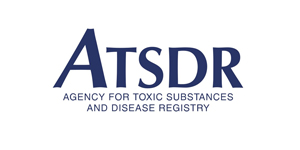
Lead Toxicity: What Are the U.S. Standards for Lead Levels?
Agency for Toxic Substances & Disease Registry
www.atsdr.cdc.gov Because of lead’s importance as a cause of public health problems, a number of federal agencies have issued advisory standards or enforceable regulations that set lead levels in different media. The table below summarizes these standards and regulations for 2006; see subsequent sections for further explanation… read more

Testing Your Home For Lead In Paint and Soil
California Department of Public Health
www.cdph.ca.gov If you have children, lead in your home can cause serious long term health and behavior problems for them. Lead is a hazard to children under 6 years of age in particular. Lead in paint, dust and soil is a problem for children because it gets in their bodies when they put their fingers, toys or paint chips or dust into their mouths. Lead can also harm a pregnant woman and her developing fetus… read more - 10Lead in Drinking WaterLead is rarely found in source water but can enter drinking water via corrosion in pipes. Homes built before 1986 are more likely to have lead pipes, fixtures, and solder. More information on lead’s health effects, sources, transport, and prevention tactics are contained within this page.
Related Studies

Lead in Drinking Water
The Science Education Resource Center at Carleton College
www.serc.carleton.edu Lead (Pb) in the environment is a major environmental health hazard. It has had wide use in a wide variety of commercial products ranging from leaded gas to household paint. However, Pb is a toxic substance that affects the development of the nervous system, and extended exposure can lead to neorological dysfunction and even death. … read more

Basic Information about Lead in Drinking Water
United States Environmental Protection Agency
www2.epa.gov The United States Environmental Protection Agency (EPA) regulates lead in drinking water to protect public health. Lead may cause health problems if present in public or private water supplies in amounts greater than the drinking water standard set by EPA… read more
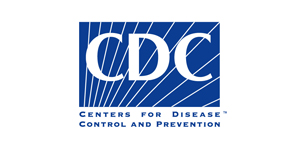
About Lead in Drinking Water
Centers of Disease Control and Prevention
www.cdc.gov For more than 20 years, CDC has championed children’s health by working together with other federal agencies and through effective programs and policies to prevent childhood lead poisoning. Exposure to lead can cause behavior problems and learning disabilities in young children and can also affect the health of adults… read more - 11Testing for LeadThere are three main approaches for determining the lead content in paint: 1) Test the paint for lead in situ using a chemical test kit. 2) Measure the amount of lead in paint in situ using a portable X-ray fluorescence (XRF) device. 3) Collect a paint sample and measure its lead content in a laboratory using various analytical techniques
Related Studies

Brief guide to analytical methods for measuring lead in paint
World Health Organization
www.who.int This document provides a brief overview of analytical methods available for measuring lead in paint. It is primarily aimed at informing environmental health personnel and policy-makers who are not laboratory specialists but who may need to develop plans for lead paint testing and abatement programmes … read more - 12Effect of Lead on the Performance of GILead does not vaporize until it gets over 3000°F, and since some of it is soluble in steel, proportionately less lead is vaporized than zinc; lead oxide fumes, however, should not be inhaled, and the practices recommended below for avoiding inhaling zinc oxide fumes will also prevent inhalation of lead oxides. There is also some concern about residual lead where galvanized products will be in contact with children, such as when it is used on playground equipment without a high-qualify top coating. Some galvanized product manufacturers use zinc that is 99.99% pure zinc, so the presence of lead is of no concern when welding these products or due to contact.
Related Studies

FACT SHEET: Galvanized Steel
UNIONSAFE
www.unionsafe.org.au Galvanizing has been used to protect iron and steel from rusting for over a hundred years in places as diverse as the wire rope used for the suspension cables on Bridges to gutters on houses. Galvanizing is simply coating of zinc over steel… read more - 13Effect of Lead on the Performance of PPGIThere is a substantial body of historical, epidemiological, and analytical evidence indicating that lead-based paint is the major source of lead poisoning in children in the United States today. The main pathway of exposure appears to be from lead in paint to lead in house dust and soil to lead hand dust to blood lead through normal hand to mouth contact. Another important pathway is through direct ingestion of paint chips. The current weight of the scientific evidence indicates that failure to control lead-based paint in older dwellings will result in continued exposure to lead for a large number of children.
Related Studies

Lead in Paint, Soil and Dust
ASTM International
www.astm.org The manuscripts support the discussions held during the week covering the topics of Health Risks, Exposure Studies, Control Measures, Measurement Methods, Quality Assurance, and Laboratory and Field Measurement Accreditation. The following is a brief summary of each of the presentations made at the conference… read more